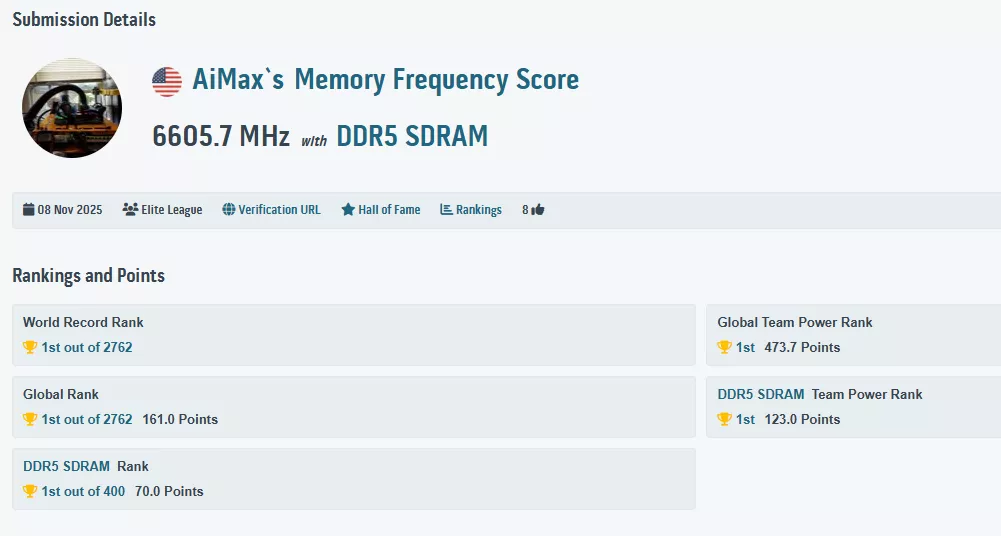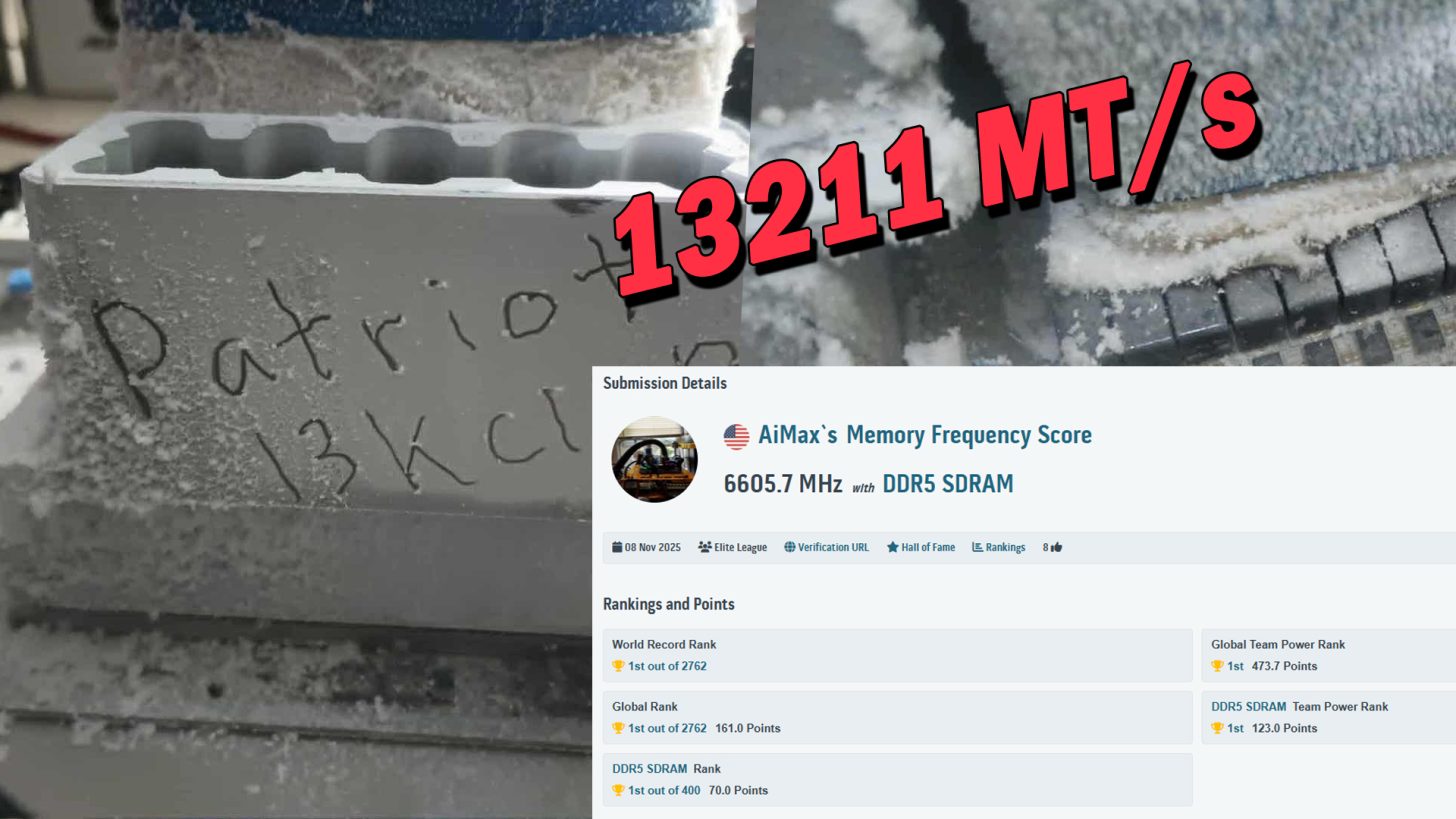In a remarkable feat, the world of overclocking has witnessed yet another DDR5 speed record being set. Just days after the previous benchmark, a new peak has been achieved, showcasing the relentless pursuit of speed by technology enthusiasts. This latest achievement not only highlights the capabilities of emerging hardware but also underscores the competitive nature of the overclocking community.
Breaking Records: AiMax Sets New DDR5 Speed Benchmark
Astonishingly, the recent world record of 13,153 MT/s set by overclocker Saltycroissant was surpassed in just four days. Today, another enthusiast, AiMax, has taken the crown by establishing a new world record for DDR5 memory speed. The feat was made official with submissions to HWBot and verification by CPU-Z, confirming an unprecedented speed of 13,211 MT/s. This achievement sets a new bar for DDR5 capabilities on mainstream platforms.

AiMax used a setup featuring the GIGABYTE Z890 AORUS Tachyon ICE motherboard, the same model employed by other top contenders, and a Patriot Viper Xtreme 5 24 GB Memory module paired with an Intel Core Ultra 7 265K. The record-breaking speed of 6605.7 MHz or 13,211 MT/s was achieved using liquid nitrogen cooling for both CPU and memory.
The Technology Behind the Speed
This record-breaking setup maintained the same latencies as previous records, with CL68-127-127-127-2 timings. While the mere 58 MT/s increase in speed may not impact practical applications significantly, it’s a testament to the dedication of overclockers like AiMax to push hardware boundaries. With speeds surpassing 13,000 MT/s, the community is optimistic about reaching new milestones, such as 13,500 MT/s.

Accomplishing such speeds with DDR5 memory demands exceptional motherboard circuitry, a robust memory controller, and a single-channel memory configuration for stability. While some manufacturers are now achieving over 10,000 MT/s in dual-channel configurations, the journey from 10,000 MT/s to 12,000 MT/s or beyond remains a challenge.
